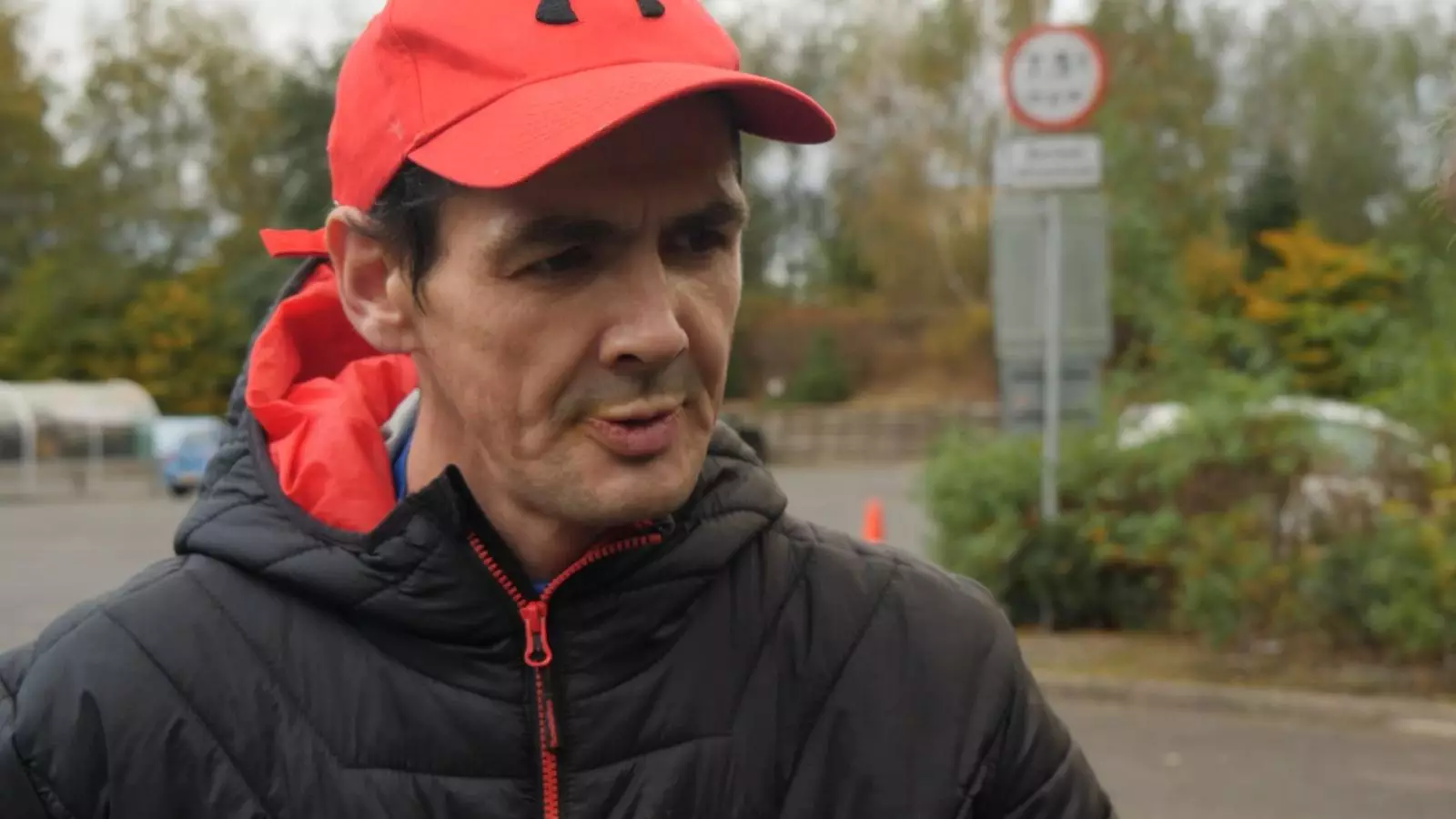In the frigid streets of East Glasgow, the chilling reality of addiction becomes painfully evident through the experiences of individuals like Chris, a 41-year-old man whose life has spiraled due to drug use and crime. His current existence is dictated by the relentless pursuit of heroin, an escape from a past burdened by trauma, including the brutal murder of his mother in 2007. On a morning that could chill anyone to the bone, Chris showcases the toll of addiction as he proclaims his recent procurement of heroin, seemingly oblivious to the chaos that surrounds him.
The needle is more than just a tool; it is a lifeline, albeit a destructive one. Chris’s frantic determination to inject himself captures the urgency that many addicts experience—an urgency propelled not just by the drug itself, but by an all-consuming need that overrides any sense of safety or hygiene. As Chris injects in an area littered with drug paraphernalia, the moral decay of his environment starkly signifies a broader epidemic. His actions, while troubling, are emblematic of countless others who find themselves trapped in the grips of addiction, desperately trying to find solace in substances that only deepen their plight.
In recent months, the Scottish government announced its plans to establish a “safer drug consumption room” in Glasgow, a groundbreaking initiative designed to tackle the alarming rate of drug-related deaths. With Scotland previously recording the highest rate of drug deaths in Europe—1,172 fatalities attributed to drug misuse in a single year—the need for innovative solutions is indeed pressing. The consumption room aims to create a medically supervised environment where individuals like Chris can use substances without fear of legal repercussions.
This proposal is significant. It reflects an evolving approach to drug addiction, shifting from purely punitive measures to a more compassionate strategy that recognizes addiction as a public health issue. The room is intended to draw individuals away from the grim realities of street drug use and into a space where they can obtain medical attention and potentially access rehabilitative services. However, this effort raises crucial questions about the balance between harm reduction and the message it sends to society regarding drug use.
Despite the potential benefits of the facility, skepticism lingers among the addicted community. Chris, for example, articulates a poignant concern about the lack of trust in governmental initiatives, posing the question of whether such a program might actually serve as a trap rather than a lifeline. This sentiment echoes wider anxieties about efficacy and safety—will vulnerable individuals feel secure enough to seek help in a space they perceive as regulated, or will they instead view it as a means for authorities to monitor them?
Stigma remains a formidable barrier, one that can undermine even well-intentioned efforts. Many individuals grappling with addiction often harbor mistrust towards initiatives framed by the government, fearing backlash or insincerity. Chris’s hesitance reflects a broader apprehension shared by others haunted by addiction, leading to potential isolation even when supportive structures are put in place.
The debate surrounding safer consumption rooms is rife with controversy, particularly when weighed against a backdrop of economic pressure on public services. Critics argue that resources could be more effectively allocated towards treatment and rehabilitation instead of merely establishing safe havens for drug use. Yet, advocates contend that harm reduction strategies like consumption rooms can coexist with treatment initiatives, ultimately saving lives while connecting individuals to rehabilitation resources.
The argument is buoyed by examples from other European countries where similar initiatives have reportedly led to decreased drug-related fatalities. Success in Glasgow’s experiment might act as a precursor for broader reforms across Scotland, emphasizing the need for comprehensive drug policies that address both immediate safety and long-term recovery.
As Chris continues to navigate the treacherous landscape of addiction, his story serves as a reminder of the many individuals ensnared in these relentless cycles. While Glasgow’s safer drug consumption room offers a glimpse of hope amidst rising death tolls, the efficacy of this approach remains to be seen. Building trust with individuals in crisis, acknowledging their fears, and encouraging them to engage with rehabilitative services are essential steps towards breaking the cycle of addiction. As Glasgow grapples with this pressing issue, it becomes clear that a balanced approach—one that encompasses both harm reduction and compassionate treatment—may hold the key to reversing a dire trend and saving lives.


Leave a Reply